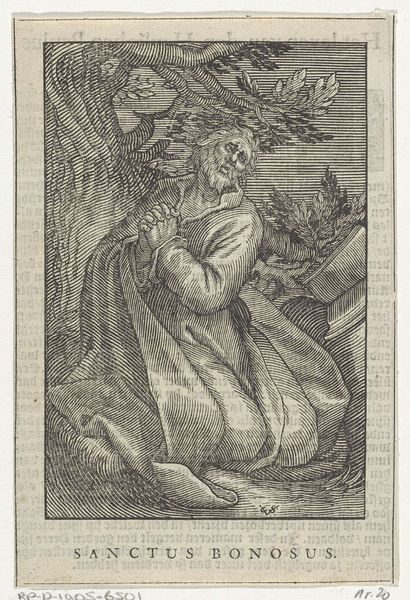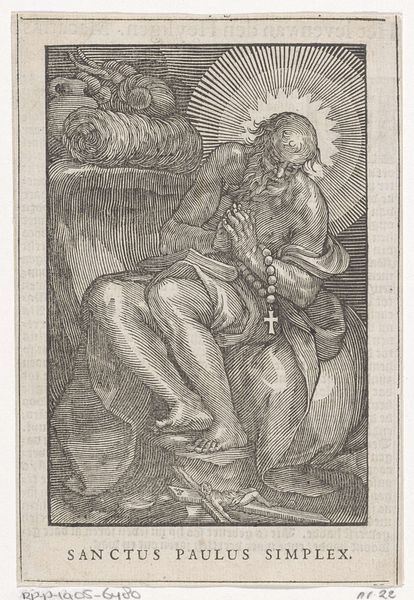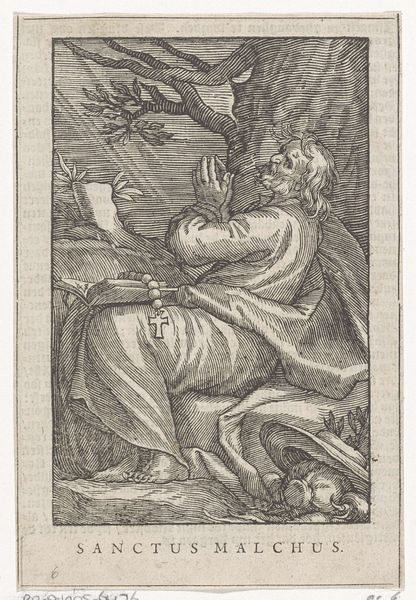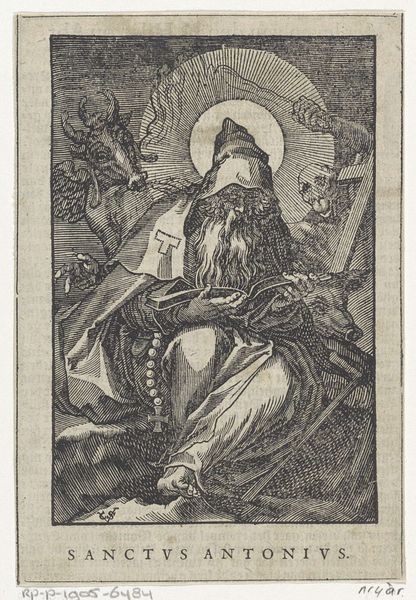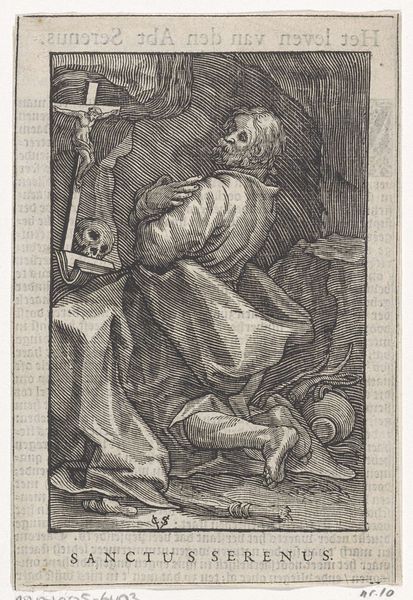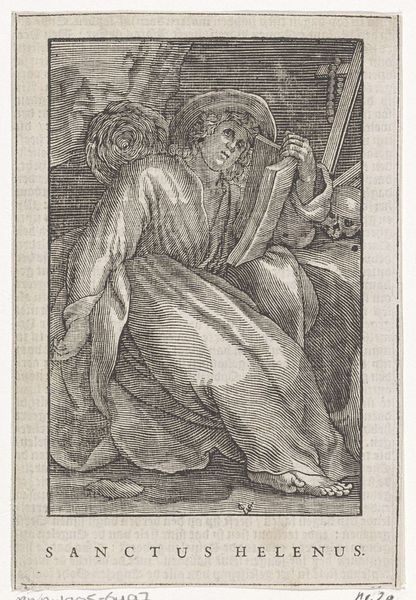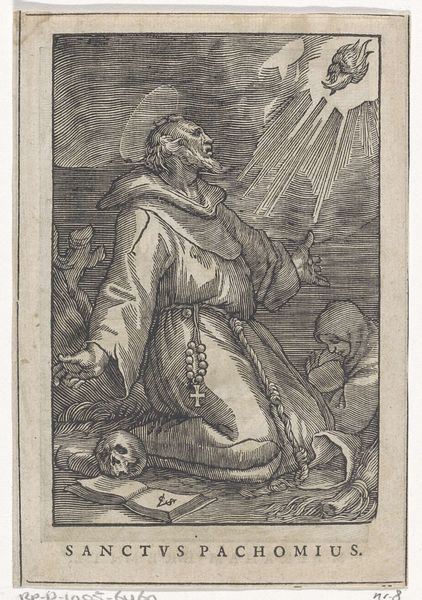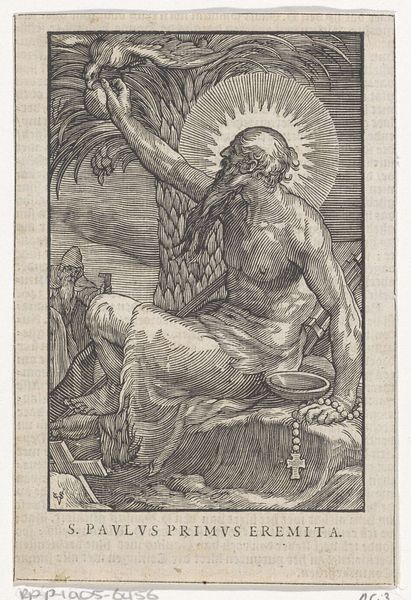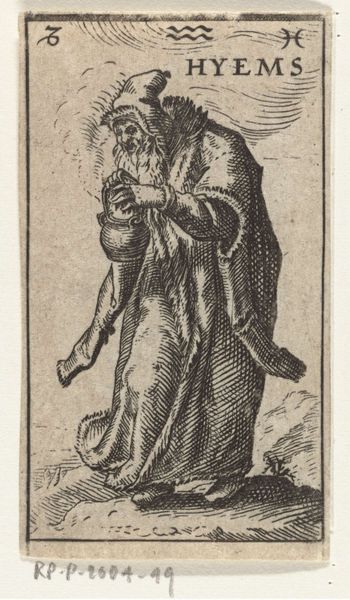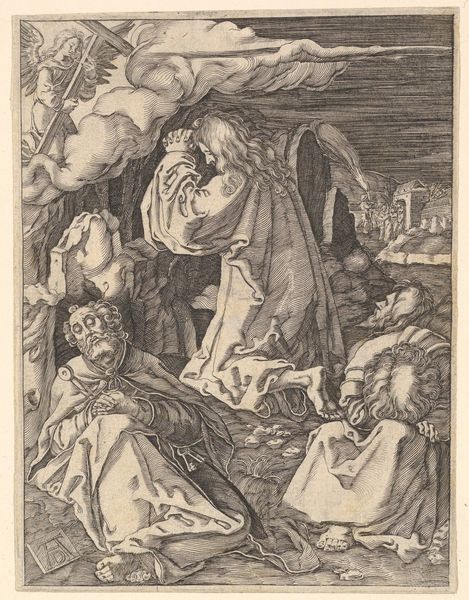
print, engraving
#
portrait
#
baroque
# print
#
engraving
Dimensions: height 152 mm, width 105 mm
Copyright: Rijks Museum: Open Domain
Christoffel van Sichem II created this woodcut, entitled *Holy Apollonius as a Hermit,* sometime in the early 17th century. The image depicts the Egyptian Saint Apollonius in prayer, with a rosary, crucifix, and bible nearby in his secluded dwelling. Prints like this one served a vital public role at this time. They circulated Christian beliefs and moral codes in an accessible visual format, especially important in a largely illiterate society. Woodcuts were relatively cheap to produce and purchase, acting as a sort of "newspaper" of the period, carrying religious and political information into homes and communities. Sichem was part of a well-established artistic family in the Netherlands, a region undergoing significant religious and political upheaval at the time this print was made. The Protestant Reformation had challenged the Catholic Church's authority, leading to conflicts and wars across Europe. Prints like this one, therefore, weren't just about religious devotion, they were subtle yet powerful assertions of cultural identity. To understand this work better, we need to look at its historical and religious context, and understand the networks through which images like this one circulated.
Comments
No comments
Be the first to comment and join the conversation on the ultimate creative platform.
